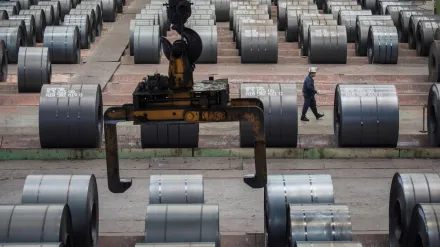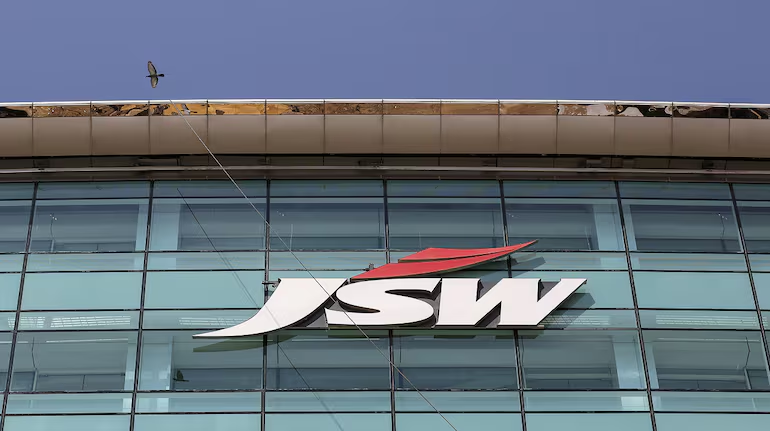Introduction
India’s steel industry is crucial to its infrastructure and economic growth. To protect it from cheap imports, the DGTR recently proposed a 12% provisional safeguard duty on select steel products for 200 days. This sparked speculation about a possible hike to 20%. However, on April 16, Steel Secretary Sandeep Pondrik stated there’s no reason to expect an increase. He confirmed the proposal is under review and a final decision will come soon, easing concerns across the industry.
Understanding the Context of Safeguard Duties in Steel

What is a Steel Safeguard Duty?
A safeguard duty is a temporary tariff imposed by a country to protect its domestic industries from an unforeseen surge in imports. This measure is WTO-compliant and allows governments to shield their local businesses from unfair trade practices or price dumping.
In the case of steel, India has experienced a surge in low-cost imports, particularly from countries like China, South Korea, and Vietnam. These imports are priced significantly lower than domestic steel, making it harder for local manufacturers to compete.
Why Is the Indian Government Considering This Move?
The DGTR, after conducting a thorough investigation, found evidence that the sudden rise in imports could harm the domestic steel industry. To counteract this threat, the 12% provisional safeguard duty has been recommended on select flat steel products for a period of 200 days. These include:
- Hot Rolled Coils (HRC)
- Cold Rolled Coils (CRC)
- Galvanized Sheets
- Steel Pipes
The aim is to give Indian steelmakers a fair chance to compete in the market, stabilize prices, and avoid job losses in the manufacturing sector.
Steel Safeguard Secretary’s Statement: A Balanced Approach
In his interview, Steel Secretary Sandeep Pondrik made it clear that there’s no justification for a safeguard duty higher than the DGTR’s initial recommendation.
“The recommendation is under examination and a decision is likely in the near future. However, there’s no reason to expect a hike beyond 12%,” he told CNBC-TV18.
His statement comes as a relief to many in the steel ecosystem who were concerned about increased costs. The secretary’s measured tone indicates the government is striving for a balanced policy, one that protects domestic industry while keeping inflationary pressures in check.
Stakeholder Reactions: Relief, but Cautious Optimism
Domestic Steel Safeguard Manufacturers Welcome the Move
Major players like Tata Steel, JSW Steel, and SAIL have welcomed the Steel Safeguard duty. They argue that the influx of cheap steel from overseas has made it difficult to maintain fair pricing and production levels.
A senior executive at Tata Steel Safeguard said,
“A 12% safeguard duty is a step in the right direction. It provides us with the cushion we need to maintain capacity utilization and avoid large-scale layoffs.”
Recent news
Importers and Construction Sector Seek Clarity
On the other hand, importers and infrastructure developers were anxious about a possible increase to 20%. Many feared that a sharp hike could make Steel Safeguard prohibitively expensive, increasing project costs for roads, bridges, and housing.
A spokesperson from the National Highways Authority of India (NHAI) stated,
“We rely heavily on affordable steel. Any sudden duty hike would impact project budgets and timelines.”
Pondrik’s clarification has been received positively across the board, though many stakeholders are awaiting the final government notification before breathing a full sigh of relief.
Personal Opinion:
The 12% safeguard duty seems like a balanced solution, providing protection to domestic steelmakers without completely barring competition. While it is essential to protect the industry during international disruptions, the focus must also remain on continued efficiency and innovation. The steel secretary’s statement helped assuage market fears, suggesting a considered approach by the government.
Economic Implications of Steel Safeguard Duties
Domestic Market Stabilisation
Steel Safeguard duties generally aim to give domestic manufacturers temporary relief from unfair trade competition. The 12% duty, if implemented, will likely:
- Increase demand for Indian steel
- Encourage manufacturers to ramp up production
- Help stabilise domestic prices
Risks of Higher Duties
If the duty were to go beyond 12%, the following risks could emerge:
- Increased cost of construction: A 20% duty could raise steel prices significantly.
- Inflationary impact: As steel is a core component in multiple industries, price hikes could ripple through the economy.
- Retaliatory trade measures: Exporting countries may challenge India at the WTO or retaliate by imposing duties of their own.
Thus, a moderate 12% rate strikes a balance between protection and affordability.
International Perspective: How Other Countries Handle Steel Imports
India is not alone in grappling with steel import surges. Several countries have used similar strategies:
- United States: Imposed 25% tariffs on steel under Section 232 in 2018 citing national security.
- European Union: Implemented safeguard measures on 26 steel product categories to stabilize internal markets.
- Indonesia and Brazil: Applied temporary duties to counteract cheap Chinese steel imports.
These global examples show that Steel Safeguard duties are a common and accepted tool, but overuse can backfire economically and diplomatically.
What Comes Next? The Policy Timeline
Government Review and Notification
As of mid-April 2025, the DGTR’s recommendation is still under review by the Ministry of Finance and the Ministry of Steel. The timeline for the final decision is not officially confirmed, but sources suggest:
- Within the next 2–4 weeks, a government notification will be issued.
- If accepted, the 12% duty will be applicable retroactively from the date of DGTR’s initial proposal.
- The measure will be valid for 200 days, during which a detailed investigation will determine if a permanent Steel Safeguard measure is needed. Steel Safeguard
Possible Scenarios Post-Decision
| Scenario | Outcome |
|---|---|
| 12% duty implemented | Market stabilizes, limited import reduction |
| Duty raised to 20% | Potential price hikes, industry backlash |
| Duty not implemented | Domestic producers face further margin pressure |
So far, all signals point toward Scenario 1: adoption of the 12% duty with no hike.
What It Means for the Common Man
You might wonder, “How does all this affect me?” Well, steel is used in almost every sector — from homes to highways, factories to furniture. So any change in its price has a domino effect:
- Real estate prices may increase or decrease.
- Cost of vehicles, appliances, and machinery may change.
- Infrastructure project delays may affect public services and jobs.
By keeping the duty moderate, the government is ensuring that the burden doesn’t fall on the consumer.
Conclusion: Policy Clarity is Crucial for Market Confidence
The Indian government’s steel safeguard policy is at a crucial juncture. The DGTR has done its job by identifying the risk and recommending a provisional measure. Now, the ball is in the court of policymakers. With Steel Secretary Sandeep Pondrik confirming there’s “no reason” to expect a duty hike beyond 12%, the industry is breathing easier — for now.
The next few weeks will be critical as the final decision is expected to shape the future of steel imports, pricing, and industrial competitiveness in India. A balanced approach that protects both domestic producers and downstream industries will go a long way in maintaining market confidence.
Disclaimer:
The views and investment tips expressed by investment experts on MoneyFlowInsight.com are their own and not those of the website or its management. MoneyFlowInsight.com advises users to check with certified experts before making any investment decisions.






